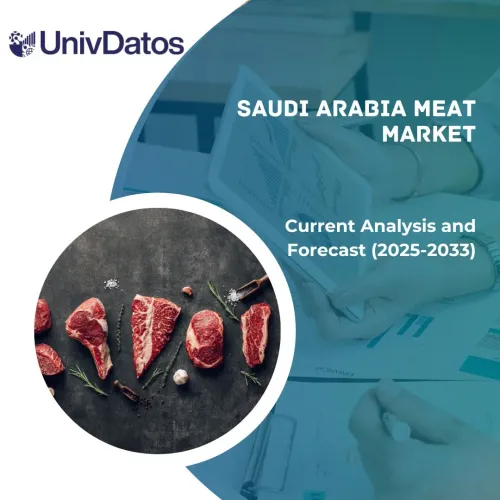- Home
- About Us
- Industry
- Services
- Reading
- Contact Us
Rigid Chilled Food Packaging Market: Current Analysis and Forecast (2024-2032)
Emphasis on Material (Plastic, Glass, Metal, and Others), Type (Trays, Containers, Jars, and Others), Application (Dairy Products, Meat and Poultry, Ready-to-Eat Meals, Fruits and Vegetables, and Others); and Region/Country
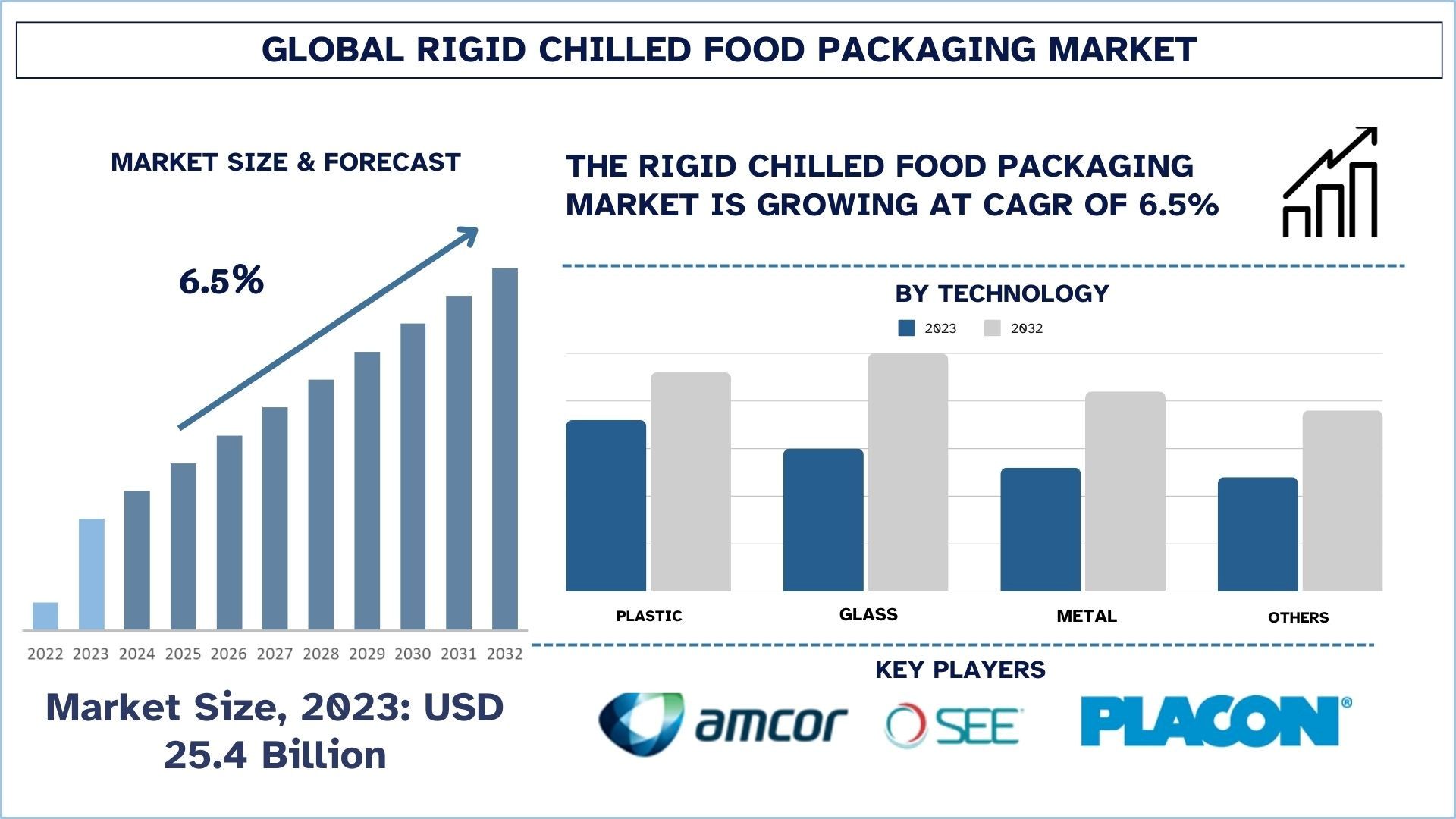
Rigid Chilled Food Packaging Market Size & Forecast
The Rigid Chilled Food Packaging Market was valued at approximately USD 25.4 billion in 2023 and is expected to grow at a substantial CAGR of around 6.5% during the forecast period (2024-2032) owing to the rising consumer demand for ready-to-eat meals and packaged food items, along with technological advancements in the rigid packaging systems.
Rigid Chilled Food Packaging Market Analysis
Rigid chilled food packaging is a durable and inflexible packaging solution that helps in the protection of perishable foods while maintaining them at temperatures between 0°C to 5°C. Rigid food packaging utilizes materials including polypropylene, PET, glass, and aluminum to preserve product structure thus protecting chilled foods against leaks, contamination, and spoilage in delivery and storage conditions. The extended shelf life of chilled foods relies on rigid packaging because it creates unbreakable moisture-blocking protection that stops microbial activity. Lightweight materials are stackable and recyclable, which makes this packaging system convenient. The combination of appearance enhancement and product protection found in rigid chilled food packaging creates both functionality and aesthetic appeal. Innovations within this industry bring forward bio-based and compostable materials that synchronize with sustainability trends as they diminish environmental impact.
The rigid chilled food packaging market is driven by several key factors that reflect the continuous change in consumer preferences. The change in lifestyle and urbanization has raised the demand for convenience foods, such as ready-to-eat meals and pre-packaged salads, which is a major driver for the growth of this market globally. Consumers who prioritize food safety, as well as food hygiene standards, are driving a rise in the need for resilient packaging solutions that can prevent leaks and resist contamination. Improved cold chain logistics with better refrigeration technology are also major drivers for the growth of chilled food products, as these food products require strong and intact packaging to maintain product safety during storage and transportation. The rise of disposable incomes across India and China as well as other emerging markets has driven chilled and premium food consumption which requires rigid packaging solutions.
Rigid Chilled Food Packaging Market Trends
This section discusses the key market trends influencing the various segments of the rigid chilled food packaging market as identified by our research experts.
Rise of Sustainable Practices
The rigid chilled food packaging market is experiencing major growth due to sustainability concerns. The marketplace currently demands eco-conscious packaging solutions because both consumers and businesses have developed a greater awareness regarding environmental protection. Modern rigid packaging solutions increasingly use materials that are recyclable biodegradable and compostable. Packaging manufacturers implement sustainable manufacturing through their implementation of bioplastics along with plant-based resins that minimize environmental harm. Additionally, companies aim to lower their environmental impact by optimizing their supply chains and adopting sustainable manufacturing techniques. The transition to sustainable packaging moves forward because regulators force manufacturers toward single-use plastics reduction while pushing for circular economy target achievement. The food sector's transition to environmentally sustainable packaging practices continues to gain momentum due to the ongoing consumer preference for companies that share similar ecological values.
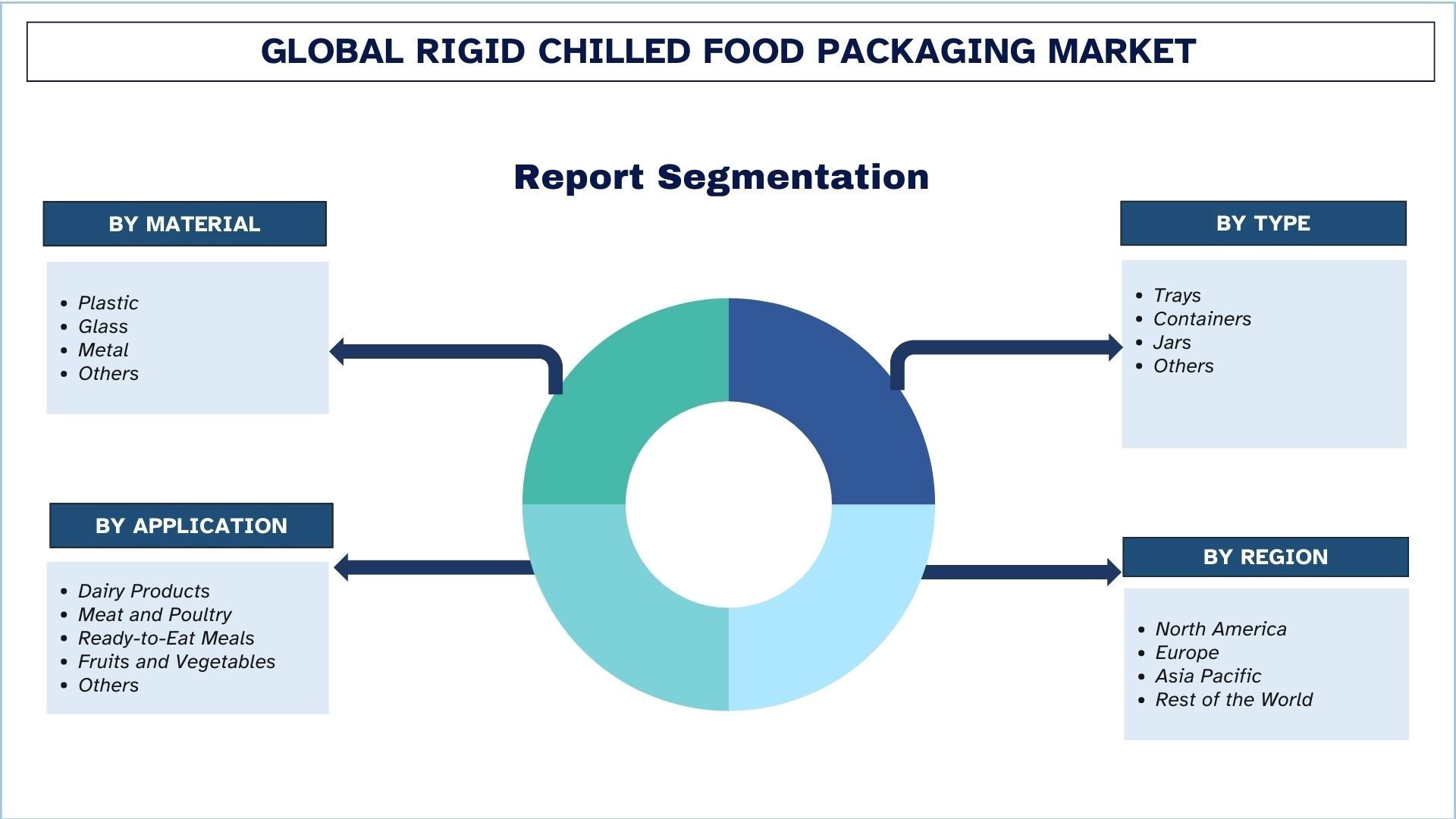
Asia-Pacific is expected to be the fastest-growing region
The rigid chilled food packaging market in the Asia-Pacific region shows strong projections for future growth because of the rising demand for packaged foods. Rapid urbanization and changes in consumer lifestyles along with rising disposable incomes throughout China, India, and other Southeast Asian countries are fuelling the increase in the demand for convenience foods such as ready-to-eat meals and dairy products along with freshly cut salads, accelerating the demand for improved packaging solutions. Modern eating patterns adopted by Asia Pacific country's growing middle-class population have driven significant demand for packaging solutions to preserve chilled and refrigerated food quality and safety. Packaging advancements including rigid options gained manufacturer's attention because of the rising food safety regulations and packaging inspection standards that demand superior protection against contaminants. The market potential for chilled food distribution improves as the region develops its cold chain logistics infrastructure and refrigeration systems, leading to significant growth in the future.
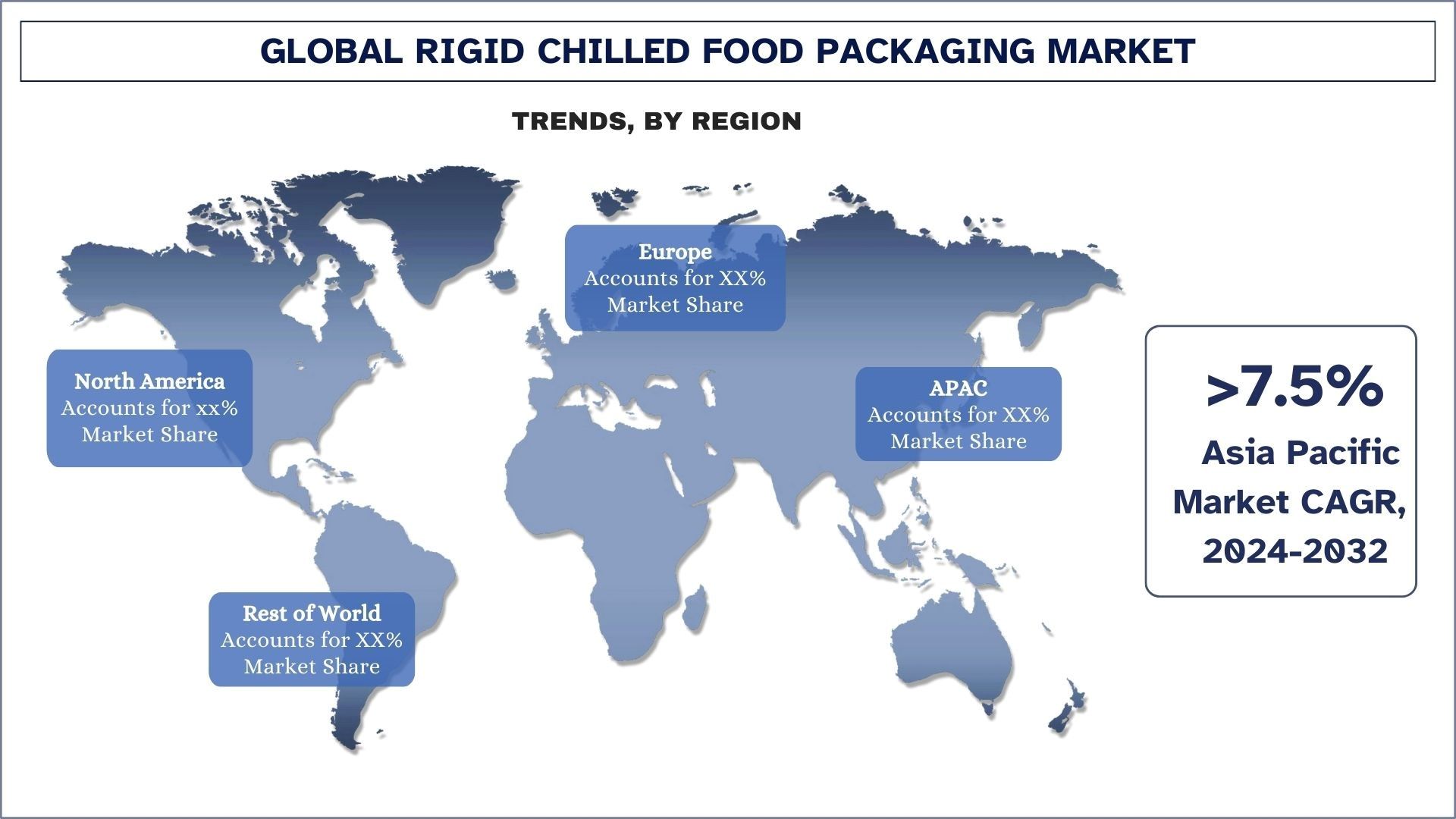
Rigid Chilled Food Packaging Industry Overview
The rigid chilled food packaging market is competitive, with several global and international players. The key players are adopting different growth strategies to enhance their market presence, such as partnerships, agreements, collaborations, new product launches, geographical expansions, and mergers and acquisitions. Some of the major players operating in the market are Sealed Air Corporation, Placon Corporation, Pactiv Evergreen Inc., Sonoco Products Company, Huhtamaki, Inc., Amcor Plc., Dart Container Corporation, Tempack, Triton International Enterprises, Inc., Graphic Packaging International, LLC.
Rigid chilled food packaging Market News
In November 2024 – Amcor plc and Berry Global Group, Inc., announced they have entered into a definitive merger agreement, pursuant to which Amcor and Berry will combine in an all-stock transaction. The combination brings together two highly complementary businesses to create a global leader in consumer packaging solutions.
In April 2024 - Klöckner Pentaplast (kp) launched the first food packaging trays comprising 100% recycled PET (rPET) derived exclusively from trays. The newly launched kp tray is the first to be composed entirely of recycled tray material. This achievement is a major breakthrough in the packaging industry and perfectly demonstrates what is possible with the right combination of expertise and technology.
Rigid Chilled Food Packaging Market Report Coverage
Details | |
Base year | 2023 |
Forecast period | 2024-2032 |
Growth momentum | Accelerate at a CAGR of 6.5% |
Market size 2023 | USD 25.4 Billion |
Regional analysis | North America, Europe, Asia-Pacific, Rest of the World |
Major contributing region | Asia-Pacific is expected to grow at the highest CAGR during the forecasted period. |
Key countries covered | U.S., Canada, Germany, France, UK, Spain, Italy, China, Japan, and India |
Sealed Air Corporation, Placon Corporation, Pactiv Evergreen Inc., Sonoco Products Company, Huhtamaki, Inc., Amcor Plc., Dart Container Corporation, Tempack, Triton International Enterprises, Inc., Graphic Packaging International, LLC. | |
Report Scope | Market Trends, Drivers, and Restraints; Revenue Estimation and Forecast; Segmentation Analysis; Demand and Supply Side Analysis; Competitive Landscape; Company Profiling |
Segments Covered | By Material, Type, By Application, By Region/Country |
Reasons to buy this report:
The study includes market sizing and forecasting analysis validated by authenticated key industry experts.
The report presents a quick review of overall industry performance at one glance.
The report covers an in-depth analysis of prominent industry peers with a primary focus on key business financials, product portfolios, expansion strategies, and recent developments.
Detailed examination of drivers, restraints, key trends, and opportunities prevailing in the industry.
The study comprehensively covers the market across different segments.
Deep dive regional level analysis of the industry.
Customization Options:
The global rigid chilled food packaging market can be customized further as per the requirement or any other market segment. Besides this, UMI understands that you may have your own business needs, hence feel free to connect with us to get a report that completely suits your requirements.
Table of Content
Research Methodology for the Rigid Chilled Food Packaging Market Analysis (2022-2032)
Analyzing the historical market, estimating the current market, and forecasting the future market of the global rigid chilled food packaging market were the three major steps undertaken to create and analyze the adoption of rigid chilled food packaging in major regions globally. Exhaustive secondary research was conducted to collect the historical market figures and estimate the current market size. Secondly, to validate these insights, numerous findings and assumptions were taken into consideration. Moreover, exhaustive primary interviews were also conducted with industry experts across the value chain of the global rigid chilled food packaging market. Post assumption and validation of market numbers through primary interviews, we employed a top-down/bottom-up approach to forecasting the complete market size. Thereafter, market breakdown and data triangulation methods were adopted to estimate and analyze the market size of segments and sub-segments of the industry. Detailed methodology is explained below:
Analysis of Historical Market Size
Step 1: In-Depth Study of Secondary Sources:
A detailed secondary study was conducted to obtain the historical market size of the rigid chilled food packaging market through company internal sources such as annual reports & financial statements, performance presentations, press releases, etc., and external sources including journals, news & articles, government publications, competitor publications, sector reports, third-party database, and other credible publications.
Step 2: Market Segmentation:
After obtaining the historical market size of the rigid chilled food packaging market, we conducted a detailed secondary analysis to gather historical market insights and share for different segments & sub-segments for major regions. Major segments are included in the report as material, type, application, and regions. Further country-level analyses were conducted to evaluate the overall adoption of rigid chilled food packaging in that region.
Step 3: Factor Analysis:
After acquiring the historical market size of different segments and sub-segments, we conducted a detailed factor analysis to estimate the current market size of the rigid chilled food packaging market. Further, we conducted factor analysis using dependent and independent variables such as material, type, application, and regions of the rigid chilled food packaging market. A thorough analysis was conducted for demand and supply-side scenarios considering top partnerships, mergers and acquisitions, business expansion, and product launches in the rigid chilled food packaging market across the globe.
Current Market Size Estimate & Forecast
Current Market Sizing: Based on actionable insights from the above 3 steps, we arrived at the current market size, key players in the global rigid chilled food packaging market, and market shares of the segments. All the required percentage shares split, and market breakdowns were determined using the above-mentioned secondary approach and were verified through primary interviews.
Estimation & Forecasting: For market estimation and forecast, weights were assigned to different factors including drivers & trends, restraints, and opportunities available for the stakeholders. After analyzing these factors, relevant forecasting techniques i.e., the top-down/bottom-up approach were applied to arrive at the market forecast for 2032 for different segments and sub-segments across the major markets globally. The research methodology adopted to estimate the market size encompasses:
The industry’s market size, in terms of revenue (USD) and the adoption rate of the rigid chilled food packaging market across the major markets domestically.
All percentage shares, splits, and breakdowns of market segments and sub-segments.
Key players in the global rigid chilled food packaging market in terms of products offered. Also, the growth strategies adopted by these players to compete in the fast-growing market.
Market Size and Share Validation
Primary Research: In-depth interviews were conducted with the Key Opinion Leaders (KOLs) including Top Level Executives (CXO/VPs, Sales Head, Marketing Head, Operational Head, Regional Head, Country Head, etc.) across major regions. Primary research findings were then summarized, and statistical analysis was performed to prove the stated hypothesis. Inputs from primary research were consolidated with secondary findings, hence turning information into actionable insights.
Split of Primary Participants in Different Regions
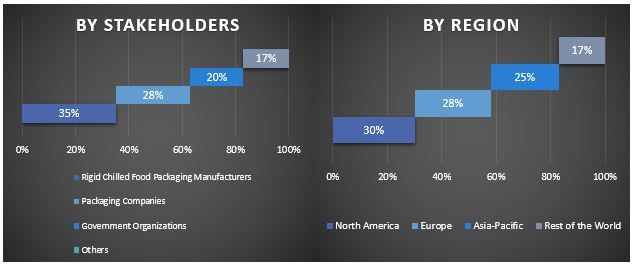
Market Engineering
The data triangulation technique was employed to complete the overall market estimation and to arrive at precise statistical numbers for each segment and sub-segment of the global Rigid chilled food packaging market. Data was split into several segments and sub-segments after studying various parameters and trends in material, type, application, and regions of the global rigid chilled food packaging market.
The main objective of the Global Rigid Chilled Food Packaging Market Study
The current & future market trends of the global rigid chilled food packaging market were pinpointed in the study. Investors can gain strategic insights to base their discretion for investments on the qualitative and quantitative analysis performed in the study. Current and future market trends determined the overall attractiveness of the market at a regional level, providing a platform for the industrial participant to exploit the untapped market to benefit from a first-mover advantage. Other quantitative goals of the studies include:
Analyze the current and forecast market size of the rigid chilled food packaging market in terms of value (USD). Also, analyze the current and forecast market size of different segments and sub-segments.
Segments in the study include areas of material, type, application, and regions.
Define and analyze the regulatory framework for the rigid chilled food packaging
Analyze the value chain involved with the presence of various intermediaries, along with analyzing customer and competitor behaviors of the industry.
Analyze the current and forecast market size of the Rigid chilled food packaging market for the major region.
Major countries of regions studied in the report include Asia Pacific, Europe, North America, and the Rest of the World
Company profiles of the rigid chilled food packaging market and the growth strategies adopted by the market players to sustain the fast-growing market.
Deep dive regional level analysis of the industry.
Frequently Asked Questions FAQs
Q1: What is the rigid chilled food packaging market's current size and growth potential?
The rigid chilled food packaging market was valued at USD 25.4 billion in 2023 and is expected to grow at a CAGR of 6.5% during the forecast period (2024-2032).
Q2: What are the driving factors for the growth of the rigid chilled food packaging market?
The rigid chilled food packaging market is majorly driven by the change in lifestyle and urbanization, growing demand for convenience foods, such as ready-to-eat meals as well as technological advancements in sustainable packaging materials.
Q3: Which segment has the largest share of the rigid chilled food packaging market by material?
The plastic segment has the largest share of the rigid chilled food packaging market by material.
Q4: What are the major trends in the rigid chilled food packaging market?
The development of smart packaging solutions, lightweight designs, and the rise in sustainable practices are the major trends in the rigid chilled food packaging market.
Q5: Which region will dominate the rigid chilled food packaging market?
North America dominated the market in 2023.
Related Reports
Customers who bought this item also bought




